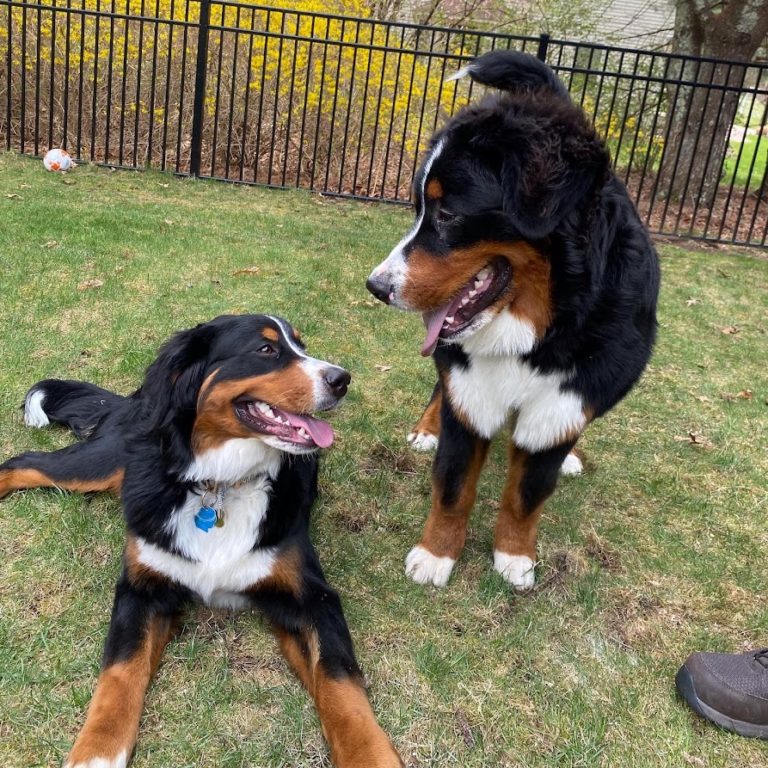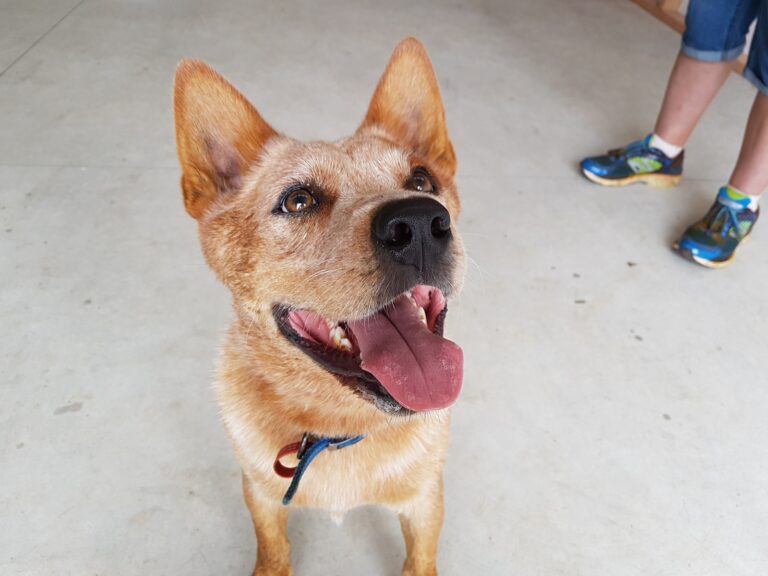The 5 Golden Rules of Dog Training
Dog training is hard. It’s hard to fit into your daily routine, especially if you are a single dog owner. It’s hard to know if you are doing the right thing. It’s hard to know if you are ever making any improvements. And it’s really easy to give up.
I know with Ezra I felt like I was trying for months and months on end with limited to no success, especially with house training. But when I look back on it, and I talk to other fellow dog owners, there are clear themes to what we did that eventually helped us be successful. I distilled these down to a small list of simple and easy rules to follow as a dog training mantra. Keep reading to learn more!

What are the 5 golden rules?
The five golden rules of dog training are pretty basic. They include: 1) getting to know your dog, 2) make training fun, 3) staying consistent, 4) training happens on both ends of the leash, and 5) staying patient and positive. We cover each of these in detail below.
What is the purpose of the golden rules?
They are similar to tenets or a mantra. When you aren’t sure what to do, you should reflect on them to help guide your path forward. For example, let’s say you just brought up a new puppy and you want to teach your new charge how to walk on a leash. Does it make sense to immediately throw a leash on the dog and bring him for a walk in the neighborhood? Maybe. Will it work? No way.
Your new dog is scared. He’s in a new environment with all strangers and he needs to get comfortable in his new home. The first step here is not to immediately leash train. The first step would be to get to know your dog and let him get to know you too.
These golden rules are most helpful at the beginning of puppyhood to help you survive puppyhood. As you make strides in training, you may not need all the rules anymore. For example, you may not need to get to know your dog anymore after you’ve lived with him for a year. But you may need to remember still that training happens on both ends of the leash and to stay positive when you are learning new skills.
Keep training by the mantra of the golden rules and you will see success in building your relationship with your dog and watching his skill count grow.
The 5 Golden Rules of Dog Training

Golden Rule #1: Get to know your dog
There are two main ways you need to get to know your dog. The first way is via breed research. What tendencies does your specific breed have? For example, are they aloof with strangers? Are they known to be stubborn? Breed characteristics will help you understand if particular skills or behaviors will be more challenging for your dog to learn.
Aside from breed traits, you should get to know your individual dog. Does he seem scared or is he confident? Does he get bored quickly or require a lot of exercise? Getting to know your dog’s personality, his likes and dislikes, and his routine will help lay a foundation for training.
Golden Rule #2: Make training fun
Puppies and dogs like to be praised. They like high energy from their pet parents. When they do a good job, give high praise in a really happy voice. Tell them they are good dogs. Reward them with treats or toys.
Puppies in particular need high energy. For example, they may get distracted during a training session and stop paying attention to you. The best way to regroup is to be more interesting then anything else in the room. Jump around. Wave your hands in the air. Clap. Grab their attention back and then go back to training.
Lastly, puppies and dogs like games. Can you turn anything in training into a game? For example, if you are working on separation anxiety with your dog, why don’t you leave them with a food puzzle like a snuffle mat? That is a fun game for your dog to sniff out all his food and get comfortable with being left alone.
Golden Rule #3: Stay consistent
It’s important to stick to a routine. When you bring home a puppy, it’s best to stick to a good puppy schedule to help get through house training, teething, and overcome the Puppy Blues.
If you decide to continue training beyond basics and learn commands like sit or lay down, it’s important to practice regularly. It’s similar to going to the gym – if you stop practicing you’ll lose your gains. The easiest way to maintain consistency is to turn meal time into training time. If your puppy eats three times a day, train three times a day for 10-20 min per session. It sounds like a ton of time, and it is. But don’t forget to leverage games to make it fun, including games that do not require your participation.
In addition to the snuffle mat, another great game idea is to fill a kong with kibble, seal it off with cream cheese or peanut butter, and freeze it. Your dog will be forced to nudge, paw, or bounce it around to get all the kibble out of it. It’ll be a great independent activity for him that requires him to use his instincts and train him to be alone.

Golden Rule #4: Remember that training goes both ways
This is the toughest one. Most people think training has nothing to do with teaching humans. Those people are totally wrong. You’ll never be able to train your dog unless you try to understand them. In order to understand them, you need to be able to communicate with them in ways that they will respond to. This requires education and practice.
For example, most trainers communicate with their dogs by giving them treats when they do a good job or luring them into the right behavior via treats. Understanding how to do this, particularly food luring or shaping, requires practice. The dog handler needs to learn how to food lure, how to reduce food luring, and when you can stop it altogether.
Golden Rule #5: Be patient and positive
Dog training can be one step forward and two steps back. Learning is never linear but it doesn’t mean progress isn’t being made. In my experience, it make take a few days up to a full month to learn a new obedience command. Don’t give up though. Stick to the schedule. Keep the energy high and continue to praise and reward your dog profusely. With patience and structure, your dog will learn new skills too.

Conclusion
The five golden rules of dog training should be all new puppy owners life mantra. This will help you to redirect your energy and make progress with your puppy. Over time, these rules will become like second nature as you and your puppy mature together. But when in doubt, stick to a routine, educate yourself as much as possible, and be patient and positive.
Are there any rules you think I missed? Comment below and let me know!







